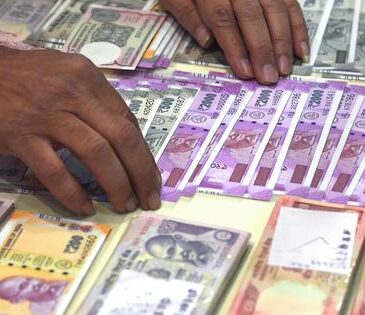
India’s foreign exchange reserves declined by $6.93 billion to $695.36 billion in the week ended October 24, the Reserve Bank of India (RBI) said in its latest Weekly Statistical Supplement. The fall was led by a dip in both foreign currency assets and gold holdings.
Even with this weekly fall, the reserves remain comfortably close to the all-time high of $704.89 billion recorded in September 2024. The figures underline the strength and stability of India’s external position amid global economic uncertainties.
Drop in foreign currency assets and gold holdings
Foreign currency assets (FCA) – the largest component of the reserves – fell by $3.86 billion to $566.55 billion during the week. Gold reserves also slipped by $3.01 billion to $105.54 billion.
The decline in gold holdings came despite a continued rise in global gold prices, which have been on an upward trend due to geopolitical risks and safe-haven demand from investors.
RBI says reserves offer strong import cover
After the most recent monetary policy meeting, RBI Governor Sanjay Malhotra said India’s reserves were sufficient to cover more than 11 months of merchandise imports. He emphasised that the country’s external sector remained resilient and that the RBI was fully equipped to meet any external obligations.
The large import cover provides India a cushion against currency volatility and external shocks, helping keep the rupee relatively stable.
Year-on-year trends show steady growth
India’s foreign exchange reserves have grown consistently over the past two years, reflecting strong capital inflows and prudent RBI intervention. In 2023, the reserves rose by about $58 billion, after falling by $71 billion in 2022. The year 2024 saw a smaller but steady rise of over $20 billion. So far in 2025, the reserves have added around $46 billion, RBI data showed.
Foreign exchange reserves are held by the central bank in major currencies like the US dollar, euro, yen, and pound sterling. The RBI manages these assets actively buying dollars when the rupee strengthens and selling when it weakens to stabilise exchange rate fluctuations.





